How To Install Bird Netting On Fruit Trees
Visualizing Decision Copse with Python (Scikit-larn, Graphviz, Matplotlib)
Larn about how to visualize decision trees using matplotlib and Graphviz

Conclusion copse are a popular supervised learning method for a multifariousness of reasons. Benefits of decision copse include that they can be used for both regression and classification, they don't require feature scaling, and they are relatively easy to interpret equally you tin visualize decision trees. This is non merely a powerful manner to empathise your model, but also to communicate how your model works. Consequently, it would aid to know how to brand a visualization based on your model.
This tutorial covers:
- How to Fit a Decision Tree Model using Scikit-Learn
- How to Visualize Conclusion Trees using Matplotlib
- How to Visualize Decision Trees using Graphviz (what is Graphviz, how to install information technology on Mac and Windows, and how to use it to visualize decision trees)
- How to Visualize Private Decision Trees from Bagged Copse or Random Forests
As e'er, the code used in this tutorial is bachelor on my GitHub. With that, allow's become started!
How to Fit a Conclusion Tree Model using Scikit-Learn
In order to visualize determination trees, we need first demand to fit a decision tree model using scikit-learn. If this section is not articulate, I encourage you to read my Agreement Decision Trees for Classification (Python) tutorial as I go into a lot of detail on how decision trees work and how to use them.
Import Libraries
The following import statements are what we will use for this department of the tutorial.
import matplotlib.pyplot as plt
from sklearn.datasets import load_iris
from sklearn.datasets import load_breast_cancer
from sklearn.tree import DecisionTreeClassifier
from sklearn.ensemble import RandomForestClassifier
from sklearn.model_selection import train_test_split
import pandas as pd
import numpy every bit np
from sklearn import tree Load the Dataset
The Iris dataset is i of datasets scikit-learn comes with that do not require the downloading of any file from some external website. The lawmaking below loads the iris dataset.
import pandas equally pd
from sklearn.datasets import load_iris
information = load_iris()
df = pd.DataFrame(information.information, columns=information.feature_names)
df['target'] = data.target 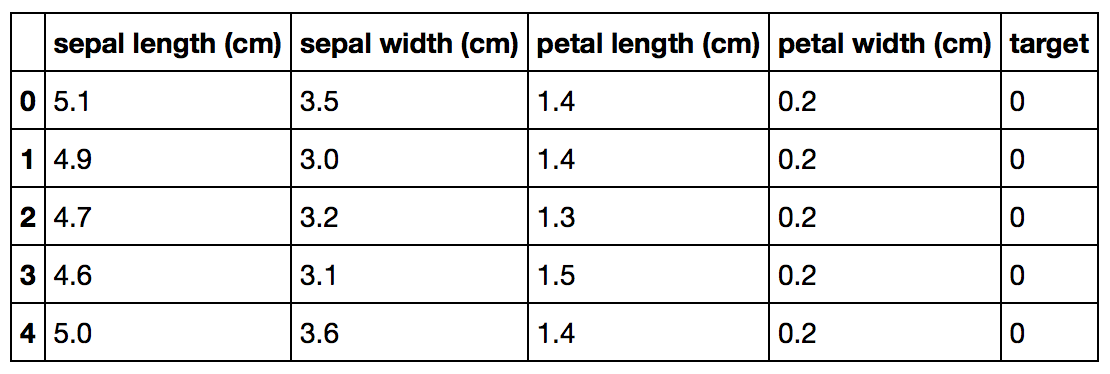
Splitting Data into Preparation and Exam Sets
The code below puts 75% of the information into a training set and 25% of the information into a test set.
X_train, X_test, Y_train, Y_test = train_test_split(df[data.feature_names], df['target'], random_state=0) 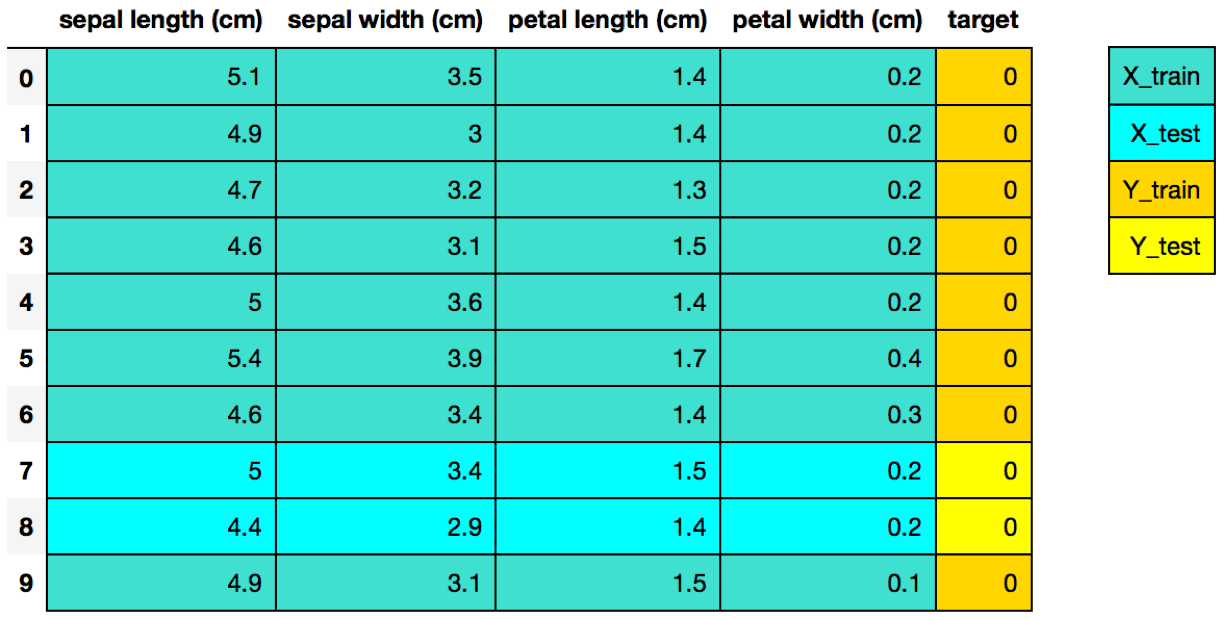
Scikit-learn iv-Step Modeling Pattern
# Footstep 1: Import the model you desire to apply
# This was already imported earlier in the notebook then commenting out
#from sklearn.tree import DecisionTreeClassifier # Step 2: Brand an instance of the Model
clf = DecisionTreeClassifier(max_depth = 2,
random_state = 0) # Step three: Railroad train the model on the data
clf.fit(X_train, Y_train) # Footstep 4: Predict labels of unseen (test) data
# Not doing this pace in the tutorial
# clf.predict(X_test)
How to Visualize Decision Copse using Matplotlib
As of scikit-acquire version 21.0 (roughly May 2022), Decision Trees can now exist plotted with matplotlib using scikit-acquire'southward tree.plot_tree without relying on the dot library which is a difficult-to-install dependency which we will encompass later on in the blog post.
The code below plots a conclusion tree using scikit-learn.
tree.plot_tree(clf); 
In addition to calculation the code to allow y'all to save your image, the code below tries to make the determination tree more interpretable past adding in feature and class names (every bit well as setting filled = True).
fn=['sepal length (cm)','sepal width (cm)','petal length (cm)','petal width (cm)']
cn=['setosa', 'versicolor', 'virginica'] fig, axes = plt.subplots(nrows = 1,ncols = ane,figsize = (iv,iv), dpi=300) tree.plot_tree(clf,
feature_names = fn,
class_names=cn,
filled = True); fig.savefig('imagename.png')
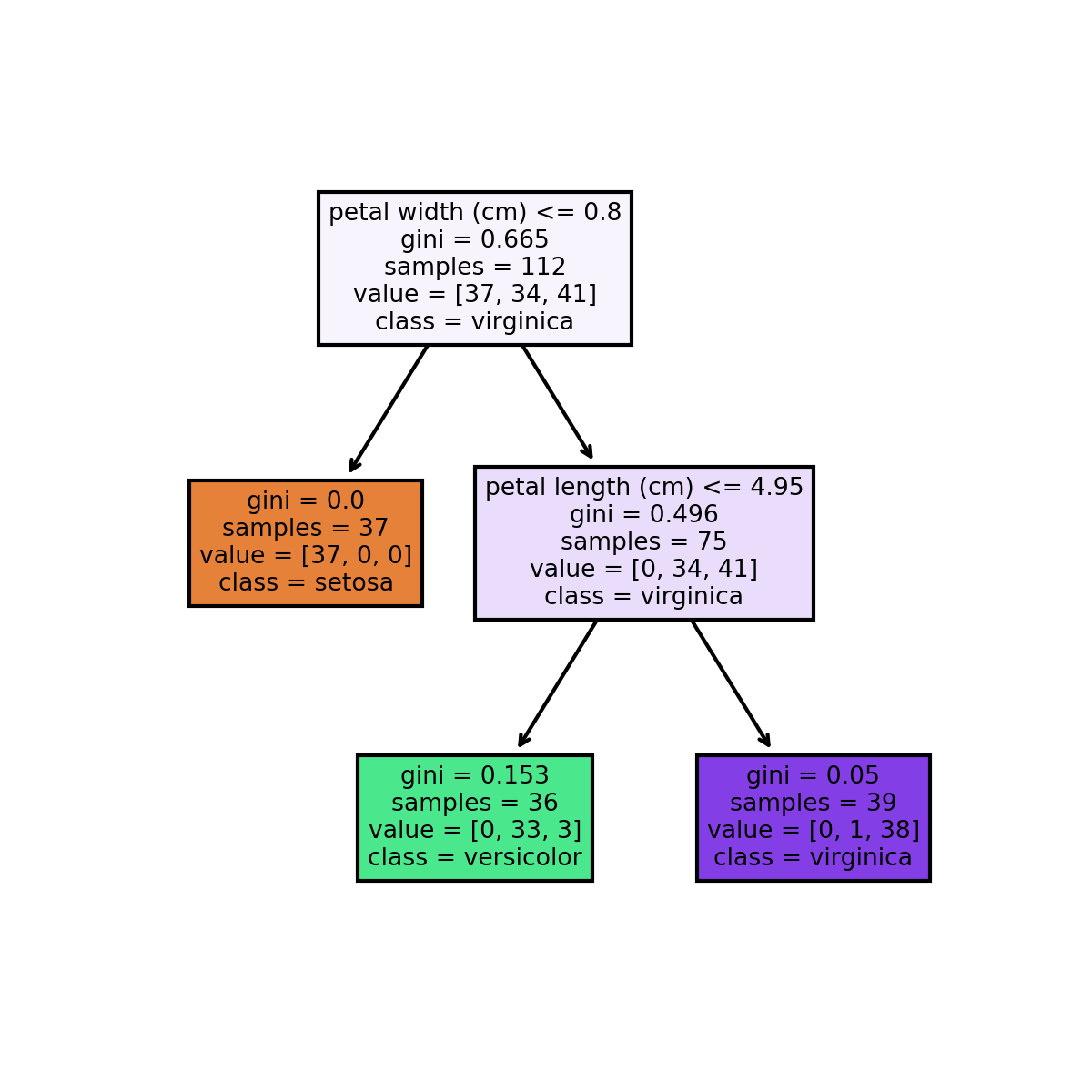
How to Visualize Decision Copse using Graphviz
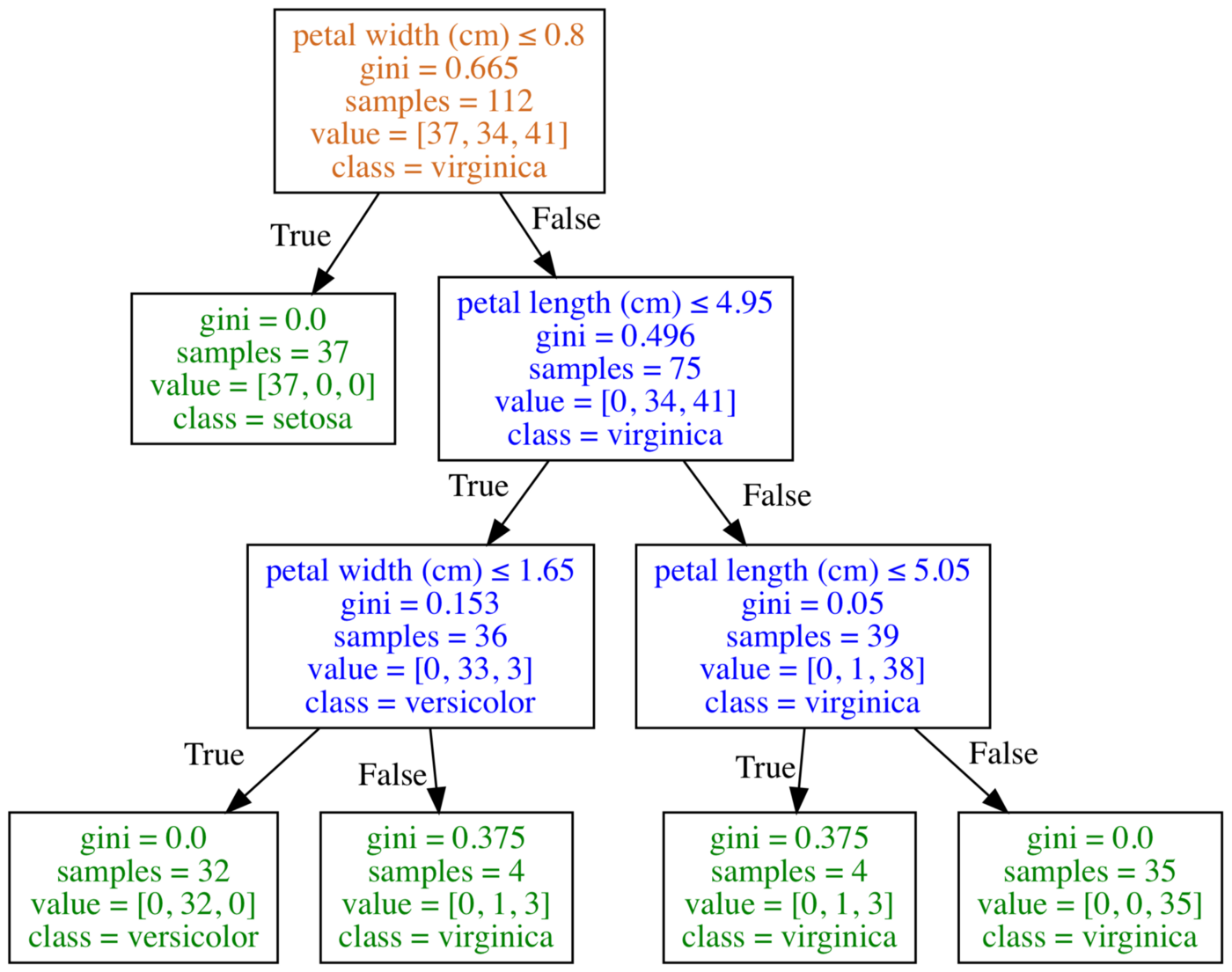
Graphviz is open source graph visualization software. Graph visualization is a mode of representing structural data as diagrams of abstruse graphs and networks. In information scientific discipline, one utilise of Graphviz is to visualize determination trees. I should note that the reason why I am going over Graphviz after covering Matplotlib is that getting this to piece of work tin can be difficult. The outset part of this procedure involves creating a dot file. A dot file is a Graphviz representation of a determination tree. The problem is that using Graphviz to catechumen the dot file into an image file (png, jpg, etc) can be hard. There are a couple ways to practise this including: installing python-graphviz though Anaconda, installing Graphviz through Homebrew (Mac), installing Graphviz executables from the official site (Windows), and using an online converter on the contents of your dot file to convert it into an epitome.

Export your model to a dot file
The lawmaking beneath lawmaking will piece of work on any operating arrangement as python generates the dot file and exports it as a file named tree.dot.
tree.export_graphviz(clf,
out_file="tree.dot",
feature_names = fn,
class_names=cn,
filled = True) Installing and Using Graphviz
Converting the dot file into an image file (png, jpg, etc) typically requires the installation of Graphviz which depends on your operating system and a host of other things. The goal of this department is to assistance people endeavour and solve the common issue of getting the following error. dot: control non found.

dot: command not institute How to Install and Utilize on Mac through Anaconda
To be able to install Graphviz on your Mac through this method, you first need to have Anaconda installed (If you don't have Anaconda installed, you tin can learn how to install it here).
Open a terminal. You can practise this past clicking on the Spotlight magnifying glass at the top correct of the screen, type terminal and then click on the Terminal icon.

Type the command below to install Graphviz.
conda install python-graphviz After that, you should exist able to use the dot command below to convert the dot file into a png file.
dot -Tpng tree.dot -o tree.png How to Install and Use on Mac through Homebrew
If you don't have Anaconda or just want some other way of installing Graphviz on your Mac, you can apply Homebrew. I previously wrote an article on how to install Homebrew and employ it to convert a dot file into an image file here (come across the Homebrew to Help Visualize Decision Trees section of the tutorial).
How to Install and Employ on Windows through Anaconda
This is the method I prefer on Windows. To exist able to install Graphviz on your Windows through this method, you commencement need to have Anaconda installed (If you don't take Anaconda installed, you tin can learn how to install information technology here).
Open a terminal/command prompt and enter the command below to install Graphviz.
conda install python-graphviz Later that, you should be able to apply the dot command below to convert the dot file into a png file.
dot -Tpng tree.dot -o tree.png 
How to Install and Use on Windows through Graphviz Executable
If you don't accept Anaconda or only desire another fashion of installing Graphviz on your Windows, you tin use the following link to download and install it.
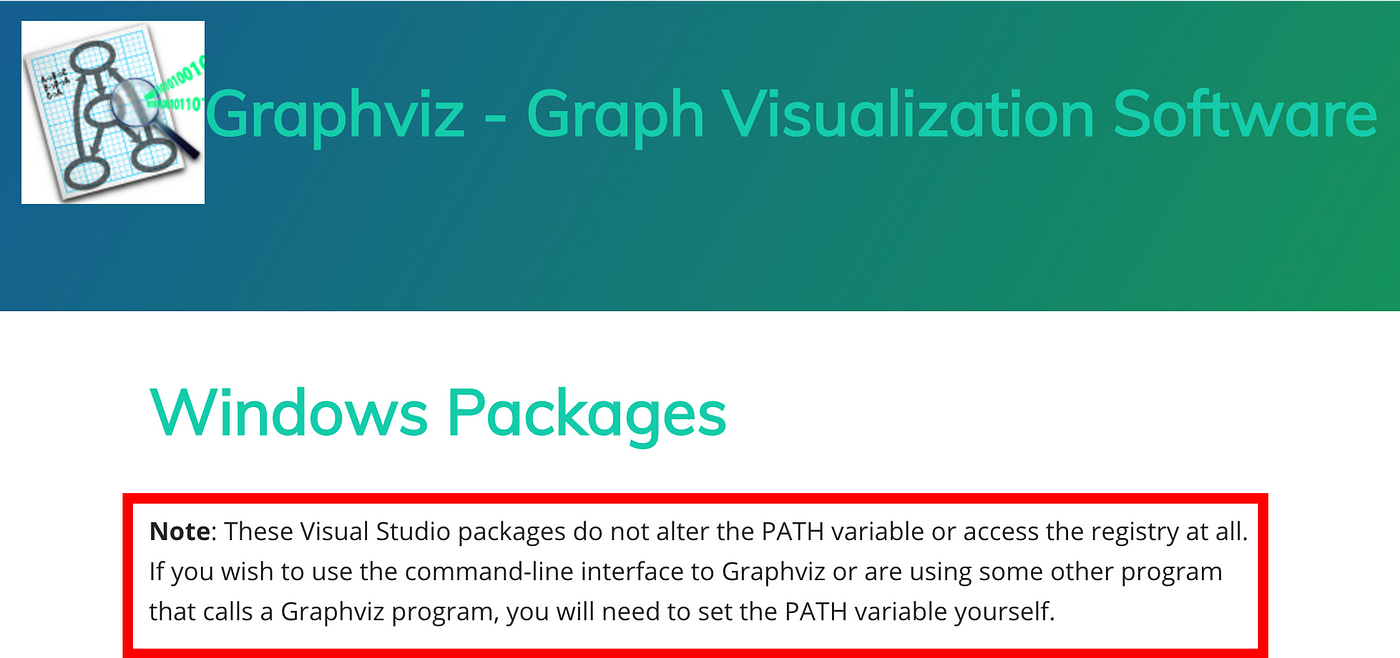
How to Use an Online Converter to Visualize your Determination Trees
If all else fails or you only don't desire to install annihilation, you can use an online converter.
In the epitome below, I opened the file with Sublime Text (though there are many dissimilar programs that can open/read a dot file) and copied the content of the file.
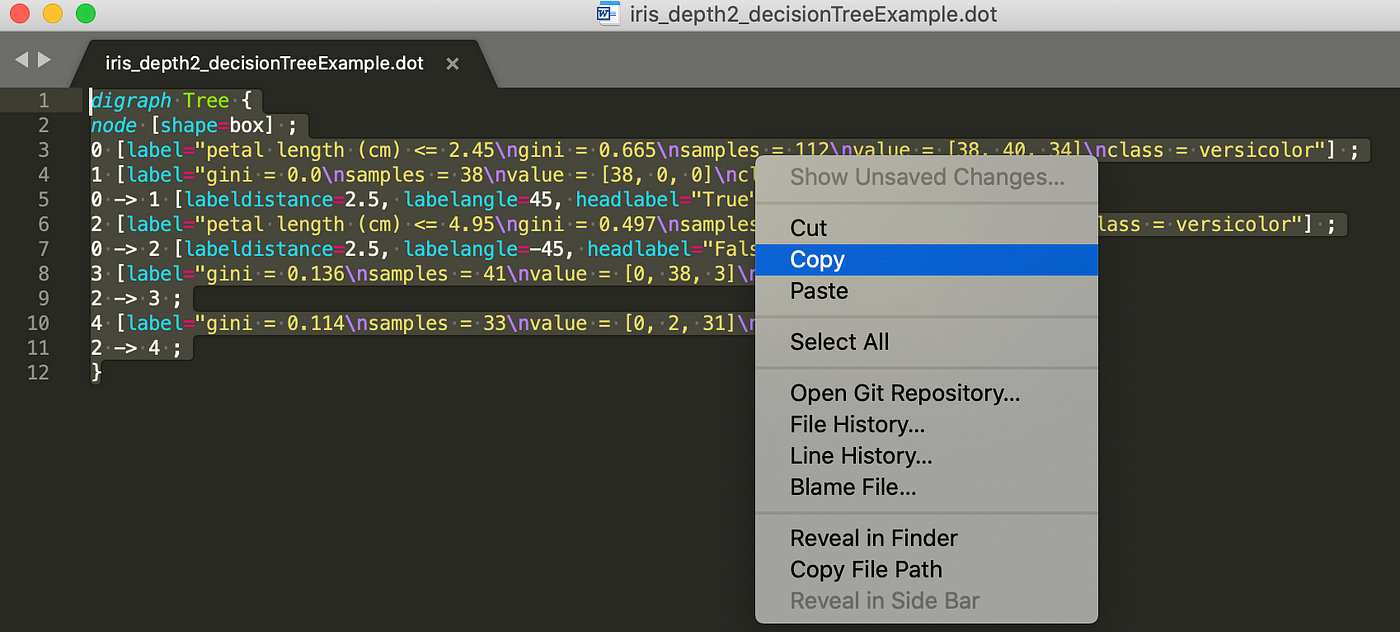
In the image below, I pasted the content from the dot file onto the left side of the online converter. You can and then cull what format you desire and then save the prototype on the right side of the screen.

Keep in mind that there are other online converters that can help reach the aforementioned job.
How to Visualize Individual Decision Trees from Bagged Trees or Random Forests
A weakness of decision trees is that they don't tend to accept the best predictive accurateness. This is partially because of high variance, pregnant that different splits in the grooming data can lead to very different trees. The video to a higher place covers Bagged Trees which is an ensemble model. This means using multiple learning algorithms to obtain a ameliorate predictive performance than could exist obtained from any of the constituent learning algorithms alone. In this example, many trees protect each other from their private errors. The interesting thing is that the thumbnail from the video higher up could be a diagram for either Bagged Trees or Random Forests (another ensemble model). The differences betwixt how Bagged Trees and Random Forests models work is a subject for some other blog, merely what is of import to note is that for both models we grow N copse where N is the number of decision trees a user specifies. Consequently after you fit a model, it would exist squeamish to look at the individual decision trees that make up your model.
Fit a Random Forest Model using Scikit-Learn
In order to visualize individual decision trees, we need starting time need to fit a Bagged Copse or Random Woods model using scikit-learn (the lawmaking below fits a Random Forest model).
# Load the Breast Cancer (Diagnostic) Dataset
data = load_breast_cancer()
df = pd.DataFrame(data.information, columns=data.feature_names)
df['target'] = information.target # Arrange Data into Features Matrix and Target Vector
X = df.loc[:, df.columns != 'target']
y = df.loc[:, 'target'].values # Split the data into training and testing sets
X_train, X_test, Y_train, Y_test = train_test_split(X, y, random_state=0) # Random Forests in `scikit-larn` (with N = 100)
rf = RandomForestClassifier(n_estimators=100,
random_state=0)
rf.fit(X_train, Y_train)
Visualizing your Estimators
Y'all can at present view all the individual trees from the fitted model. In this section, I will visualize all the conclusion trees using matplotlib.
rf.estimators_ 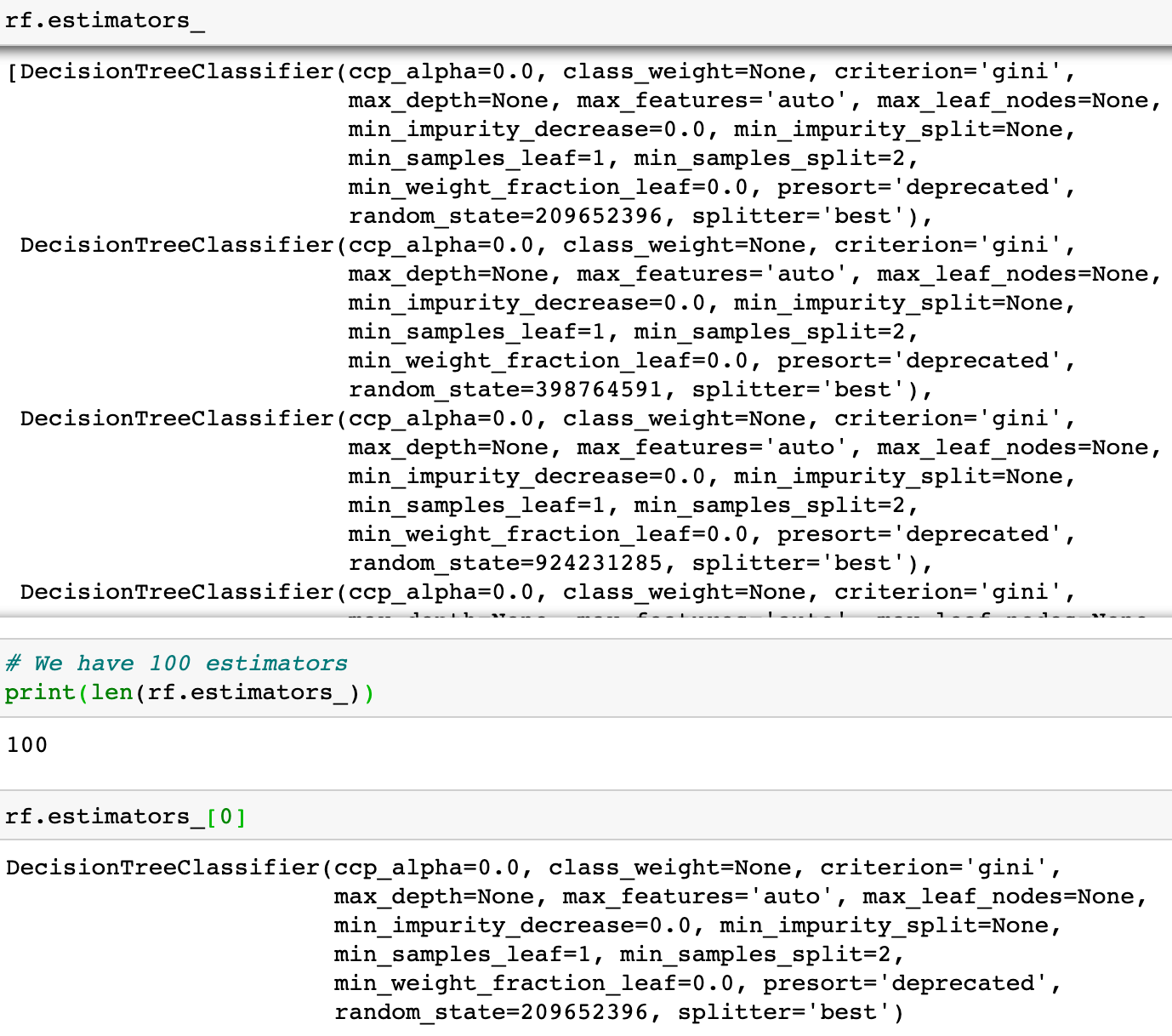
You lot can now visualize individual trees. The code beneath visualizes the first decision tree.
fn=information.feature_names
cn=data.target_names
fig, axes = plt.subplots(nrows = 1,ncols = ane,figsize = (iv,iv), dpi=800)
tree.plot_tree(rf.estimators_[0],
feature_names = fn,
class_names=cn,
filled = Truthful);
fig.savefig('rf_individualtree.png') 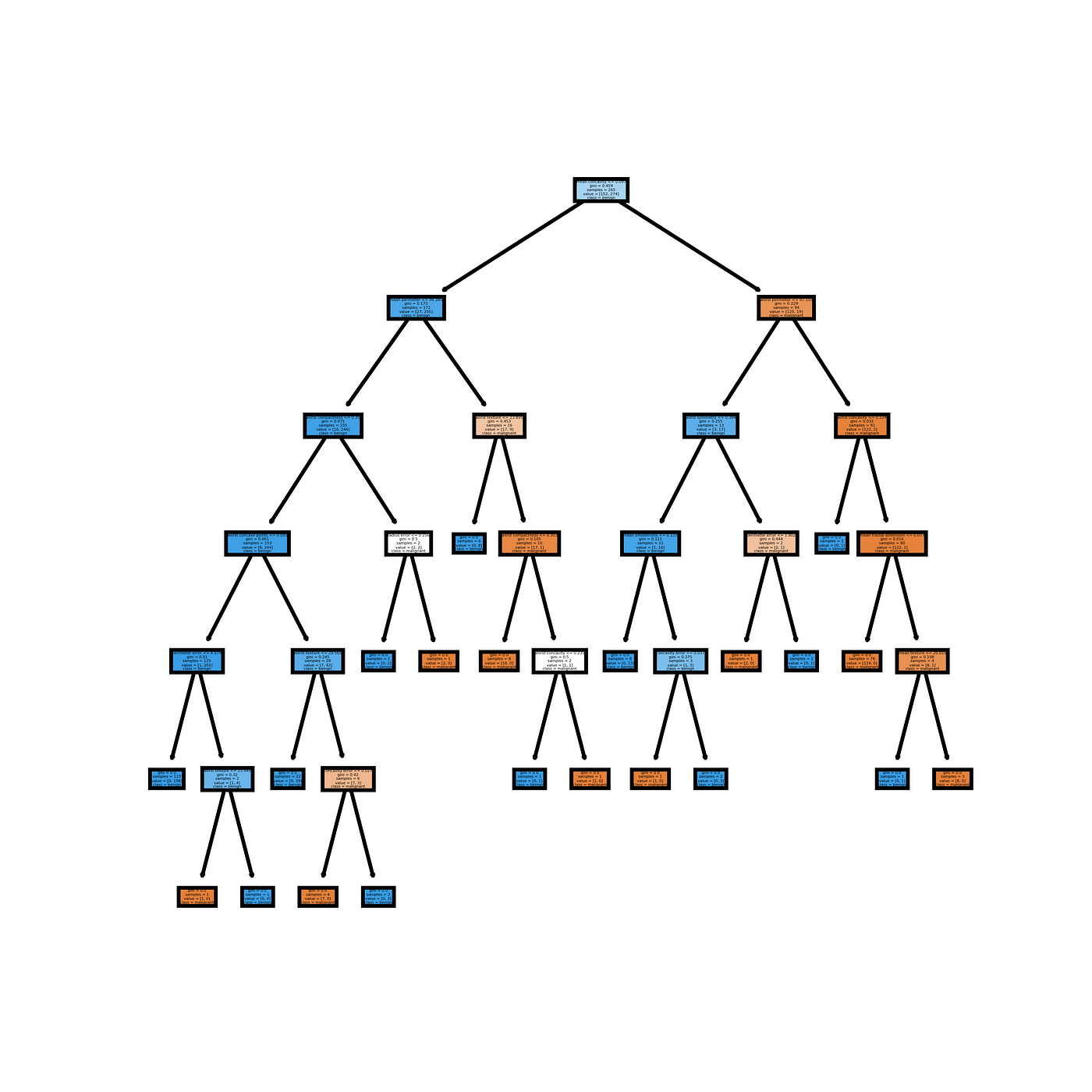
You tin try to apply matplotlib subplots to visualize as many of the copse every bit y'all like. The lawmaking below visualizes the first 5 determination trees. I personally don't prefer this method as it is fifty-fifty harder to read.
# This may not the best way to view each estimator as it is small fn=data.feature_names
cn=data.target_names
fig, axes = plt.subplots(nrows = 1,ncols = 5,figsize = (ten,2), dpi=3000) for index in range(0, 5):
tree.plot_tree(rf.estimators_[index],
feature_names = fn,
class_names=cn,
filled = True,
ax = axes[index]);axes[index].set_title('Computer: ' + str(index), fontsize = 11)
fig.savefig('rf_5trees.png')

Create Images for each of the Conclusion Trees (estimators)
Proceed in mind that if for some reason you lot want images for all your estimators (conclusion trees), you can do so using the code on my GitHub. If you merely desire to see each of the 100 estimators for the Random Wood model fit in this tutorial without running the lawmaking, you can wait at the video below.
Final Remarks
This tutorial covered how to visualize conclusion trees using Graphviz and Matplotlib. Note that the fashion to visualize decision trees using Matplotlib is a newer method so it might change or be improved upon in the futurity. Graphviz is currently more flexible as yous can always modify your dot files to brand them more visually appealing like I did using the dot linguistic communication or even just alter the orientation of your determination tree. Ane matter nosotros didn't cover was how to use dtreeviz which is another library that can visualize determination copse. There is an excellent mail service on it here.
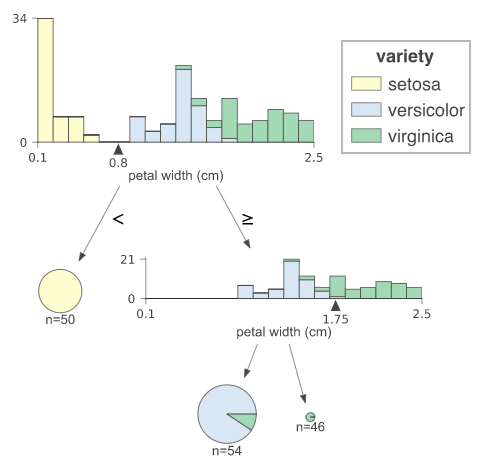
My side by side machine learning tutorial goes over How to Speed upward Scikit-Learn Model Training. If y'all have any questions or thoughts on the tutorial, feel free to reach out in the comments below or through Twitter.
Source: https://towardsdatascience.com/visualizing-decision-trees-with-python-scikit-learn-graphviz-matplotlib-1c50b4aa68dc
Posted by: weinsteinabity1998.blogspot.com


0 Response to "How To Install Bird Netting On Fruit Trees"
Post a Comment